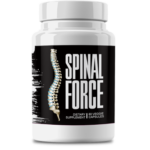This Village-Made Chinese Pain Reliever Eliminates Back And Joint Pain!
The Ultimate Guide to MCL Pain: From Diagnosis to Recovery

The Ultimate Guide to MCL Pain: From Diagnosis to Recovery
Understanding MCL Pain
What is the MCL?
The medial collateral ligament (MCL) is one of the key ligaments that help stabilize your knee joint. Located on the inner side of the knee, the MCL connects the thigh bone (femur) to the shin bone (tibia). This ligament plays a crucial role in maintaining the knee's stability, especially during activities that involve side-to-side movements. It's essential to have a healthy MCL for proper knee function and mobility.
Common Causes of MCL Pain
MCL pain can result from various factors, ranging from acute injuries to chronic conditions. Common causes include sports injuries, such as those sustained during football, skiing, or soccer. Sudden twists or direct blows to the knee can also damage the MCL. Additionally, repetitive stress from activities like running can lead to gradual wear and tear, causing pain. Understanding the root cause of your MCL pain is vital for effective treatment and recovery.
Symptoms to Look Out For
Recognizing the symptoms of MCL pain is the first step toward proper diagnosis and treatment. Common symptoms include swelling, stiffness, and tenderness along the inner side of the knee. You might also experience a popping sensation at the time of injury, followed by instability when walking or standing. In severe cases, the pain can be intense, making it difficult to bear weight on the affected leg. If you notice these symptoms, it's essential to seek medical advice promptly.
Diagnosing MCL Pain
Physical Examination
A thorough physical examination is crucial for diagnosing MCL pain. Your healthcare provider will assess your knee's range of motion, stability, and tenderness. Specific tests, such as the valgus stress test, can help identify MCL injuries. During this test, the doctor applies pressure to the knee to check for pain and instability. This hands-on approach provides valuable insights into the extent of the injury and helps guide further diagnostic steps.
Imaging Tests
Imaging tests play a significant role in diagnosing MCL pain accurately. X-rays can help rule out fractures or other bone-related issues. However, for a detailed view of the soft tissues, an MRI (magnetic resonance imaging) is often recommended. An MRI provides a clear picture of the MCL and surrounding structures, helping to identify tears, sprains, or other abnormalities. This information is crucial for developing an effective treatment plan tailored to your needs.
Differential Diagnosis
It's essential to differentiate MCL pain from other knee-related conditions to ensure accurate treatment. Conditions such as meniscus tears, ACL injuries, or osteoarthritis can present with similar symptoms. Your healthcare provider may perform additional tests or consult with specialists to rule out these possibilities. A comprehensive approach to diagnosis helps in creating a targeted treatment plan, ensuring a quicker and more effective recovery.
Treatment Options for MCL Pain
Conservative Treatments
Conservative treatments are often the first line of defense against MCL pain. Rest, ice, compression, and elevation (RICE) are standard initial steps to reduce swelling and pain. Physical therapy exercises can help strengthen the muscles around the knee, improving stability. Bracing or taping the knee can provide additional support during recovery. These non-invasive methods are effective for mild to moderate MCL injuries and can significantly improve symptoms over time.
Medications
Medications can be an essential component of MCL pain management. Over-the-counter pain relievers, such as ibuprofen or acetaminophen, can help reduce pain and inflammation. In some cases, your doctor may prescribe stronger medications or corticosteroid injections for more severe pain. It's important to follow your healthcare provider's recommendations and use medications as directed to avoid potential side effects and ensure optimal pain relief.
Surgical Interventions
Surgery is usually considered a last resort for treating MCL pain, reserved for severe injuries or cases where conservative treatments have failed. Surgical options may include repairing or reconstructing the damaged ligament. The type of surgery depends on the extent of the injury and the patient's overall health. Post-surgery, a comprehensive rehabilitation program is essential for restoring knee function and ensuring a full recovery.
Rehabilitation and Recovery
Physical Therapy
Physical therapy is a cornerstone of MCL pain recovery. A tailored physical therapy program can help restore knee strength, flexibility, and stability. Therapists use various techniques, including manual therapy, therapeutic exercises, and modalities like ultrasound or electrical stimulation. Regular sessions and adherence to the prescribed exercises are crucial for achieving the best outcomes and preventing future injuries.
Home Exercises
In addition to formal physical therapy sessions, home exercises play a vital role in MCL recovery. Simple exercises like leg raises, hamstring curls, and quadriceps stretches can be performed at home to strengthen the knee. Consistency is key; performing these exercises regularly can expedite your recovery and improve overall knee function. Always consult your physical therapist before starting any new exercise regimen to ensure it's appropriate for your condition.
Recovery Timeline
The recovery timeline for MCL pain varies depending on the severity of the injury and the treatment approach. Mild sprains may recover within a few weeks with proper care, while more severe injuries could take several months. Adhering to your treatment plan, attending physical therapy sessions, and performing home exercises can significantly influence your recovery speed. Patience and dedication are essential for a successful return to normal activities.
Preventing MCL Pain
Strengthening Exercises
Strengthening exercises are crucial for preventing MCL pain and enhancing knee stability. Focus on exercises that target the quadriceps, hamstrings, and calf muscles. Squats, lunges, and leg presses can help build strength. Incorporating these exercises into your regular fitness routine can reduce the risk of MCL injuries, particularly if you're active in sports or physical activities. Always use proper form to avoid unnecessary strain on the knees.
Proper Warm-Up Techniques
Proper warm-up techniques are essential for preventing MCL pain and other injuries. A good warm-up increases blood flow to the muscles and prepares the body for physical activity. Dynamic stretches, such as leg swings and high knees, can help loosen the muscles around the knee. Spend at least 10-15 minutes warming up before engaging in sports or exercise to ensure your muscles and ligaments are ready for action.
Protective Gear
Using protective gear can significantly reduce the risk of MCL injuries. Knee braces or supports provide additional stability during high-impact activities. Athletes, in particular, can benefit from wearing appropriate protective gear tailored to their sport. Ensure the gear fits correctly and is worn consistently during activities to maximize its protective benefits. Consult with a sports medicine specialist for recommendations on the best protective gear for your needs.
Living with MCL Pain
Pain Management Strategies
Effective pain management strategies are crucial for living with MCL pain. In addition to medications, consider alternative therapies like acupuncture, massage, or heat/cold therapy. Mindfulness techniques, such as meditation or deep breathing exercises, can help manage pain and reduce stress. Combining these strategies can provide comprehensive relief and improve your quality of life while dealing with MCL pain.
Lifestyle Adjustments
Making lifestyle adjustments can help manage MCL pain and prevent further injuries. Maintain a healthy weight to reduce stress on the knees. Engage in low-impact activities like swimming or cycling to stay active without overloading the knee joint. Pay attention to your body and avoid activities that exacerbate your symptoms. These adjustments can significantly improve your overall well-being and help you manage MCL pain effectively.
When to Seek Professional Help
Knowing when to seek professional help is crucial for managing MCL pain effectively. If you experience severe pain, persistent swelling, or instability, it's essential to consult a healthcare provider. Delaying medical attention can lead to further complications and prolonged recovery. Regular follow-ups with your doctor or physical therapist can help monitor your progress and make necessary adjustments to your treatment plan.
FAQs About MCL Pain
Common Myths and Facts
There are several myths and misconceptions about MCL pain that can hinder proper management. One common myth is that resting alone can heal all MCL injuries. While rest is important, a comprehensive treatment plan is often necessary for full recovery. Another misconception is that surgery is always required for MCL injuries. In reality, many cases can be managed with conservative treatments. Understanding the facts about MCL pain can help you make informed decisions about your care.
Expert Tips for Management
Experts recommend several tips for managing MCL pain effectively. Prioritize early diagnosis and treatment to prevent complications. Follow a structured rehabilitation program and stay consistent with your exercises. Pay attention to your body's signals and avoid pushing through pain. Additionally, consider working with a sports medicine specialist if you're an athlete or engage in high-impact activities. These expert tips can help you navigate your recovery journey successfully.
Long-Term Outcomes
Long-term outcomes for MCL pain vary depending on the severity of the injury and the effectiveness of the treatment plan. With proper care and rehabilitation, many individuals can return to their normal activities without significant limitations. However, some may experience residual symptoms or require ongoing management. Regular follow-ups and adherence to preventive measures can improve long-term outcomes and reduce the risk of re-injury.
Resources and Support
Finding a Specialist
Finding a specialist is crucial for managing MCL pain effectively. Look for healthcare providers with expertise in sports medicine, orthopedics, or physical therapy. Referrals from your primary care physician or recommendations from friends and family can help you find a qualified specialist. Online directories and professional associations are also valuable resources for locating experts in your area.
Online Communities
Online communities can provide valuable support and information for individuals dealing with MCL pain. Joining forums or social media groups focused on knee injuries can help you connect with others who share similar experiences. These communities offer a platform to exchange tips, share success stories, and seek advice. Engaging with online communities can provide emotional support and practical insights during your recovery journey.
Recommended Reading
Educating yourself about MCL pain is essential for effective management. Several books and articles provide in-depth information on knee injuries and their treatment. Look for resources written by medical professionals or reputable organizations. Recommended readings can help you understand your condition better, explore treatment options, and stay informed about the latest advancements in MCL pain management.








